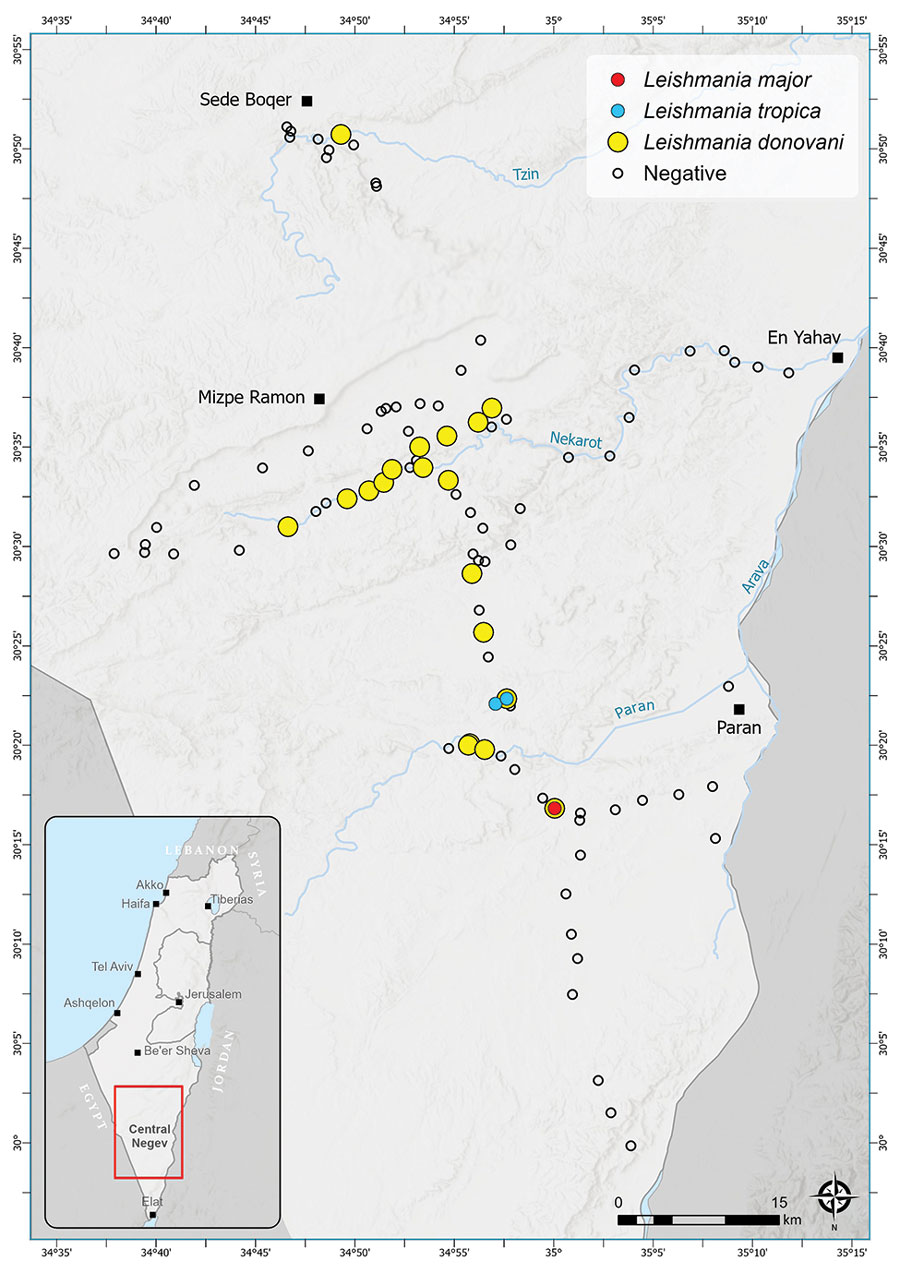Volume 29, Number 5—May 2023
Research
Leishmania donovani Transmission Cycle Associated with Human Infection, Phlebotomus alexandri Sand Flies, and Hare Blood Meals, Israel1
Figure 1

Figure 1. Locations of Phlebotomus spp. sand fly collection sites within the central Negev region of Israel in study of Leishmania donovani transmission cycle associated with human infection, Phlebotomus alexandri sand flies, and hare blood meals. We collected sand flies outdoors in August 2018, September 2019, and August 2020 by using modified traps from the US Centers for Disease Control and Prevention. The traps operated without light and were powered by 2 AA (1.2V) rechargeable batteries and baited with ≈1 kg dry ice. Traps were placed in an updraft vertical position overnight; openings were ≈10 cm above the ground, and collection cups hung above the motor and fan. Different colored circles indicate sites where specific Leishmania spp. infections were identified in trapped Phlebotomus sand flies. Empty circles indicate sites where sand flies were negative for Leishmania spp. Inset shows location of the survey area in Israel (red box).
1Data from this study were presented at the Israeli Society for Parasitology, Protozoology and Tropical Diseases Annual Meeting; March 21, 2022; Kfar Hamaccabiah, Ramat Gan, Israel.